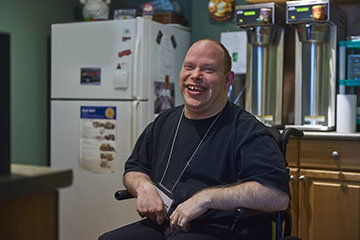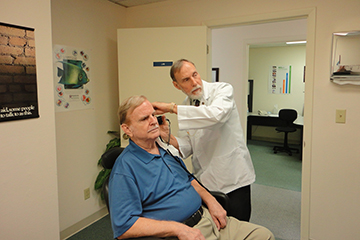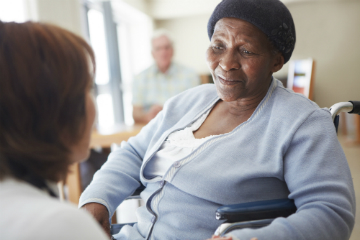Disability Awareness
 Disability means many things to many people, but the World Health Organization (WHO) defines it as “an umbrella term, covering impairments, activity limitations, and participation restrictions. An impairment is:
Disability means many things to many people, but the World Health Organization (WHO) defines it as “an umbrella term, covering impairments, activity limitations, and participation restrictions. An impairment is:
- a problem in body function or structure,
- an activity limitation which may include a difficulty encountered by an individual in executing a task or action,
- a participation restriction which is a problem experienced by an individual in involvement in life situations.”
Disability awareness is dedicated to:
- making people aware of the rights of persons with disabilities,
- making information available and accessible for persons with disabilities to grant them equal access to socio-economic opportunities,
- promoting the use of the abilities of differently-abled persons, and
- demonstrate the government’s commitment to promoting, protecting and upholding the rights of persons with disabilities.
Disability awareness seeks to promote an understanding of disability issues and the gains which are to be derived from the integration of persons with disabilities in every aspect of the political, social, economic and cultural life of their communities. It also provides an opportunity to achieve the goal of full and equal enjoyment of human rights and participation in society.
Be aware
Don’t assume you know what the disability is. Many different conditions can present themselves in similar ways. Some disabilities are “invisible” – they’re not immediately obvious when you’re speaking to the person, but they may still face challenges in communicating with you. Try not to draw your own conclusions about a certain disability, because the effect thereof might vary from person to person. Rather aim to relate to the individual person and respond to their individual needs.
Types of Disabilities
Types of disabilities include various physical and mental impairments that can hamper or reduce a person's ability to carry out his day to day activities. Some disabilities may be hidden, known as an invisible disability. There are several sub-categories:
- Physical - affects a person's mobility or dexterity.
- Intellectual - affects a person's abilities to learn and interact.
- Psychiatric - affects a person's thinking processes.
- Sensory - affects a person's ability to hear or see.
- Neurological - results in the loss of some bodily or mental functions.
Blindness
Blindness or visual impairment usually refers to individuals who are unable to see partially or at all. If you’re partially blind, you have limited vision. For example, you may have blurry vision or the inability to distinguish the shapes of objects. Complete blindness means that you can’t see at all. Legal blindness refers to vision that’s highly compromised.
The following eye diseases and conditions can cause blindness:
- Glaucoma refers to 4 different eye conditions that can damage your optic nerve, which carries visual information from your eyes to your brain.
- Macular degeneration destroys the part of your eye that enables you to see details. It usually affects older adults.
- Cataracts cause cloudy vision. They’re more common in older people.
- A lazy eye can make it difficult to see details. It may lead to vision loss.
- Optic neuritis is an inflammation that can cause temporary or permanent vision loss.
- Retinitis pigmentosa refers to damage of the retina. It leads to blindness only in rare cases.
- Tumours that affect your retina or optic nerve can also cause blindness.
Blindness is a potential complication if you have diabetes or have a stroke. Birth defects, eye injuries, and complications from eye surgery are other common causes of blindness. A thorough eye exam by an optometrist will help to determine the cause of your blindness or partial loss of vision.
 Hearing loss and deafness
Hearing loss and deafness
Hearing loss is a spectrum with minor hearing problems at one end and profound, complete deafness at the other:
- Conductive hearing loss occurs when something blocks sound waves from reaching the inner ear.
- Sensorineural hearing loss is caused by damage to the inner ear or to the nerves that send sound to the brain. Sensorineural hearing loss is more likely to be permanent and to cause deafness. Sometimes a mixture of conductive and sensorineural hearing loss can occur.
Profound deafness is easy to recognise since people will notice such a large change in hearing. Milder hearing loss may not be noticed right away, since it often comes on gradually and people "get used to it."
Some of the many causes of deafness include:
- Hereditary disorders: some types of deafness are hereditary, and in most cases, hereditary deafness is caused by malformations of the inner ear.
- Genetic disorders: some of the many genetic disorders that can cause deafness include osteogenesis imperfecta, Trisomy 13 S and multiple lentigines syndrome.
- Prenatal exposure to disease: babies will be born deaf or with hearing problems if they're exposed to certain diseases in utero, including rubella (German measles), influenza and mumps. Other factors that are thought to cause congenital deafness include exposure to methylmercury and drugs such as quinine.
- Noise: loud noises (such as gunshots, firecrackers, explosions and rock concerts), particularly prolonged exposure either in the workplace or recreationally, can damage the delicate mechanisms inside the ear.
- Trauma: for example the perforation of the eardrum, fractured skull or changes in air pressure (barotrauma).
- Disease: certain diseases can cause deafness, including meningitis, mumps, cytomegalovirus and chickenpox. A severe case of jaundice is also known to cause deafness.
- Other causes: other causes of deafness include Meniere’s disease and exposure to certain chemicals.
Communicating with people with disabilities
When communicating with someone with a disability, it’s important to remember to treat each person as an individual. Through positive and appropriate interactions with people with disabilities, we can help break down the barriers that they face in the community and in the physical environment.
It’s important to recognise people with disability for what they can do, rather than focusing on their limitations. Here are some general tips:
- Use a normal tone of voice - don’t raise your voice unless asked to.
- Be polite and patient - don’t rush the conversation.
- Speak directly to the person rather than the person with them.
- Ask the person what will help with communication - there are different ways to communicate.
- Be flexible - reword rather than repeat anything that’s not understood.
- Only refer to the person's disability if necessary or relevant.
- Offer assistance if it appears necessary, but respect the person's wishes if they don't accept your offer.
- Avoid saying anything that implies the person with a disability is superhuman, courageous or special.
| Use | Don't use |
|
Person with a disability |
Victim, suffers from, deformed |
|
Person with cerebral palsy or vision impairment |
Afflicted by/with or blind/can't see |
|
Person with a physical disability |
Crippled, the crippled, crippling, invalid |
|
Person who uses a wheelchair |
Wheelchair-bound, confined to a wheelchair |
|
Person with a hearing impairment, hearing loss |
Deaf and dumb, deaf-mute, person who is deaf |
|
Accessible parking, accessible toilets |
Disabled parking, handicapped toilets |
You can read more about how to communicate with people with disabilities.
 Making workspaces friendly and accessible
Making workspaces friendly and accessible
The Employment Equity Act, 1998 is a guide for employers and workers to encourage equal opportunities and fair treatment of people with disabilities. It’s intended to educate and inform employers and workers to understand their rights and obligations to promote certainty and to reduce disputes so that people with disabilities can effectively enjoy and exercise their rights at work.
Employers should adopt the most cost-effective means that are consistent with effectively removing the barriers to perform the job and to enjoy equal access to the benefits and opportunities of employment.
Reasonable accommodation applies to applicants and staff members with disabilities who are suitably qualified for the job and may be required:
- during the recruitment and selection process
- in the working environment
- in the way work is usually done, evaluated and rewarded
- in the benefits and privileges of employment.
Physical accommodations for disabled workers can include the following:
- Lowering a desktop height for a wheelchair user.
- Providing special telephone equipment for a hearing-impaired worker.
- Providing assistive devices such as computers and computer programmes to assist disabled employees.
- Allowing a vision-assistance dog into the workspace for a blind worker.
- Modified and flexible work schedule for a worker with mobility challenges.
- Accessible parking spaces.
Programmes and services for people with disabilities
If you’re living with any disability, we have various programmes and services on offer to cater for the basic rights of you and your family. We’re dedicated to making sure that you receive the best care and support through these programmes:
1.) Services for persons with disabilities
We want to ensure that disabled people get the best possible services available to them.
A safe, disabled-friendly environment which provides opportunities for people with disabilities to develop and improve their skills. The aim is to help participants to earn an income through the products they make to increase their disability grants.
3.) Residential facilities for persons with disabilities
If you’re looking for a proper residential facility for your loved one, we have just the facilities you’re looking for.
4.) Persons with disabilities programme
This programme aims to ensure that everyone who lives with disabilities, as well as their families, have access to developmental social welfare services. It also aims to promote socio-economic opportunities through our protective workshops.
Other national services for people with disabilities
Meet South Africa's paralympians



